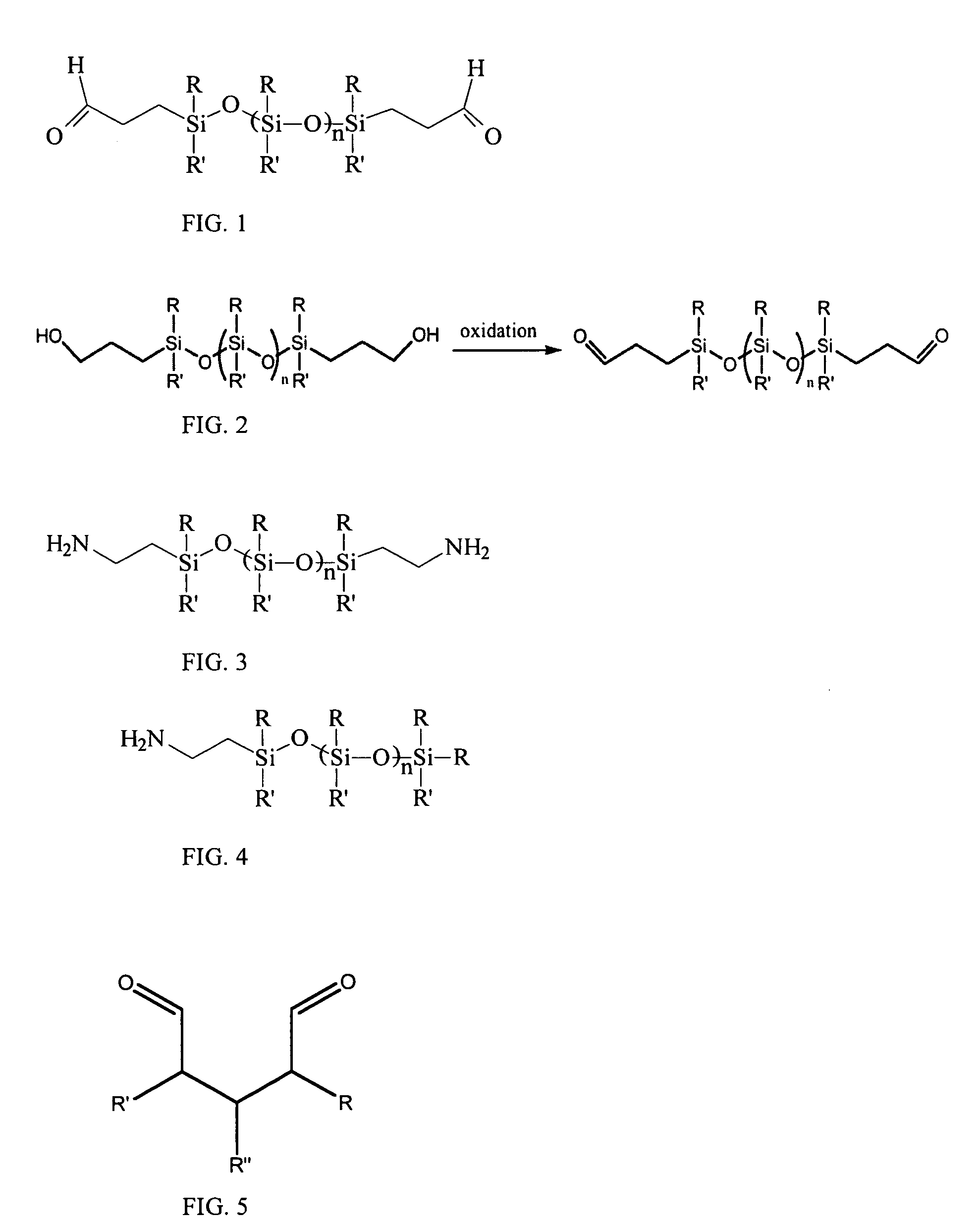Anti-calcification treatments for heart valves and vascular grafts
a heart valve and anti-calcification treatment technology, applied in the field of prosthetic devices, can solve the problems of mechanical devices, calcification potential, and calcification, and achieve the effect of reducing calcification potential, high solubility, and enhancing solubility in supercritical co2
- Summary
- Abstract
- Description
- Claims
- Application Information
AI Technical Summary
Benefits of technology
Problems solved by technology
Method used
Image
Examples
example 1
[0055] Fixation of tissue, for example, but not limited to, bovine or porcine pericardial tissue, is accomplished by dissolving the reactive substituted dialdehyde compounds described above and known to those of skill in a solvent system that allows the substituted dialdehydes to penetrate the moist tissue for complete fixation. Such a solvent by nature is a polar, water compatible solvent such as tetrahydrofuran, formamide, dimethyl formamide, 2-methoxyethanol, dioxane, or other water compatible solvent that is also a solvent for the substituted dialdehydes. In some cases, the supercritical CO2 solvents discussed below may be used in this regard.
[0056] The tissue is first added to the solvent to remove water from the tissue. The tissue can then be removed and placed in contact with more solvent containing the substituted dialdehyde or other fixative and allowed to stand for a period of time from hours to days. The temperature of the fixation is not critical, but can vary from refr...
example 2
[0057] Post-fixation treatment of glutaraldehyde fixed tissue is accomplished in a manner similar to that described in Example 1. Siloxane and / or perfluorocarbon amine compounds, for example siloxane monoamines or diamines can be dissolved in a solvent system that allows the siloxane dialdehydes to penetrate the moist tissue for complete fixation. Such a solvent by nature is typically a polar, water compatible solvent such as tetrahydrofuran, formamide, dimethyl formamide, 2-methoxyethanol, dioxane, or other water compatible solvent that is also a solvent for the siloxane dialdehydes. Of course, the supercritical CO2 solvents discussed below may be used in this regard.
[0058] The tissue is first added to the solvent to remove water from the tissue, decanted, and then solvent containing the siloxane amines is added to the tissue and allow to stand for a period of time from hours to days. The temperature of the fixation is not critical, but can vary from refrigerated temperatures to a...
example 3
[0059] In some embodiments of the invention, one can fix fresh tissue by using supercritical CO2 (scCO2) with soluble additives for fixation in a supercritical fluid process, and treating fixed tissue using a scCO2 additive to reduce calcification potential. More specifically, one can use supercritical fluid additives containing siloxane or perfluorocarbon segments as described herein with terminal aldehyde groups for tissue fixation or terminal amine groups for reducing calcification potential. For example, one can use scCO2 in conjunction with a siloxane and / or perfluorocarbon dialdehyde to fix tissue and place a siloxane group in a position on the tissue where it can prevent calcification. Alternatively, one can use scCO2 in conjunction with other fixatives, such as glutaraldehyde or a derivative of glutaraldehyde, to fix tissue prior to treatment with a composition, such as a siloxane diamine.
[0060] To treat tissue with longer chain dialdehydes, solvents other than water are re...
PUM
| Property | Measurement | Unit |
|---|---|---|
| biocompatibility | aaaaa | aaaaa |
| structure | aaaaa | aaaaa |
| length | aaaaa | aaaaa |
Abstract
Description
Claims
Application Information
 Login to View More
Login to View More - R&D
- Intellectual Property
- Life Sciences
- Materials
- Tech Scout
- Unparalleled Data Quality
- Higher Quality Content
- 60% Fewer Hallucinations
Browse by: Latest US Patents, China's latest patents, Technical Efficacy Thesaurus, Application Domain, Technology Topic, Popular Technical Reports.
© 2025 PatSnap. All rights reserved.Legal|Privacy policy|Modern Slavery Act Transparency Statement|Sitemap|About US| Contact US: help@patsnap.com



